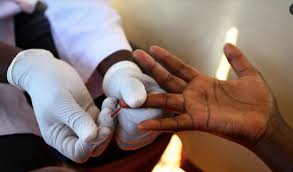Kenyans seeking HIV treatment are no longer
ushered to separate clinics for services.
They now join the normal hospital queues
and are served in the general clinics, a move known as integration.
The National Empowerment Network of People
Living with HIV/AIDS in Kenya (NEPHAK) welcomed the move saying it helps
continuity of services after the US government stopped financing HIV services
in Kenya.
“Global
funding cuts, particularly the temporary suspension of US aid in January, have
significantly strained HIV care services in Kenya. One of the immediate
consequences was a shortage of nevirapine prophylaxis for newborns, despite the
drug being available in central warehouses,” said Nelson Otwoma, the Chief
Executive Officer of Nephak.
He added: “Delays in distribution and
staffing disruptions, especially among lower-cadre healthcare workers like
adherence counsellors, further worsened access to services. Many youth-friendly
and drop-in centers were closed, forcing patients to seek care in general
hospitals, where stigma and lack of privacy deter treatment adherence. Counties
are now integrating HIV services into broader healthcare systems to maintain
access, and the Ministry of Health is distributing longer-term ARV
prescriptions to reduce clinic visits.
The Global Network
of People Living with HIV (GNP+), a non-profit with membership in Kenya, called
for a collaborative approach to provide solutions.
Regional leaders, health experts and
advocates gathered in Nairobi recently met in Nairobi for the People Living
with HIV (PLHIV) Leadership Forum to chart a sustainable path forward for the
continent’s HIV response.
The stakeholders called for a more
collaborative approach in quest for solutions to be able to alleviate the crisis
created by the aid funds closure.
Dr Mumbi Chola of the African HIV Control
Working Group called for urgent political recommitment and a new financing
model that are people centered.
He said: “We can no longer operate as if it
is business as usual. We have depended heavily on donor funding, but the time
has come for us to rethink how we sustain our HIV response using advocacy
network and local systems.”
Chola emphasised six pillars for
sustainability, including increasing domestic financing, investing in
community-led interventions, and reforming punitive policies.
“Communities have always been at the core
of HIV response. If we don’t empower and prioritise them, any gains we have
made could easily be lost,” he added.
Dr Nduku Kilonzo, the former CEO of the
Kenya National Aids Control Council, echoed the urgency, noting that sustainability
had long been discussed but rarely actualised.
“Funding of the past is in the past,” she
said. “We now have to ask what do we give up, and what must we protect at all
costs? HIV response must be redesigned to fit within national systems so that
when donor funds disappear, we are not starting from scratch again.”
Kilonzo further pointed to the severe
disruption in community services and data systems following the withdrawal of US
funding.
“In over 20 countries, stand-alone NGO
services were either partially or fully disrupted. This is not just a funding
issue but rather a systems issue. I call upon governments to absorb healthcare
workers previously funded by donor programs and integrate community-based HIV
services into national health frameworks.”
The data shared during the forum also
painted a complex picture. While there has been significant progress in
reducing HIV-related deaths and infections particularly in eastern and southern
Africa, there remain deep regional disparities and persistent challenges with
access, especially among children and key populations.
Andy Seale of the World Health Organization
(WHO) emphasized the need for a strategic pivot in the global HIV response. He
underscored the urgency of reprioritising and simplifying our approaches while
securing buy-in from member states.
He said: “The importance of maintaining
essential service delivery and commodity access calls for solidarity between
networks of people living with HIV, key populations, and country health
ministries. These are big changes, but there are huge opportunities for us. I urge
all stakeholders to leverage the crisis as a turning point toward
sustainability and stronger advocacy ownership.”
On his part, Dr Andrew Mulwa, head of the National
Aids and STI Control Programme (Nascop) highlighted the measures Kenya has
taken to feel the gap after the US funding cuts.
He said: “We have strategic measures in
place to sustain services for over 1.4 million people on treatment. The Social
Health Insurance Fund and buffer stock systems are key pillars to mitigate the
30 per cent decline in global funding. Kenya remains committed to a resilient
HIV response beyond 2030.” He called for continued collaboration with partners
and civil society.”
